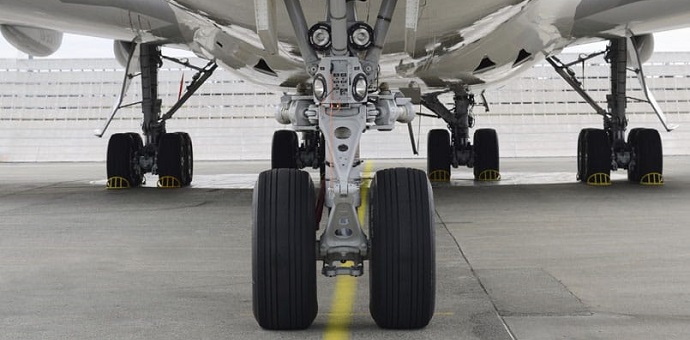An essential “component” of the aviation system is the need to ensure continuing airworthiness and this requirement of course extends to the aircraft landing gear.
Not only is the Landing Gear a key component of the aircraft it is on the receiving end of an extremely rugged service obligation as well as being exposed to a very hostile environment.
During normal “intended” activity the landing gear is obliged to absorb a considerable amount of both horizontal and vertical energy during the landing and aircraft rollout in particular – but great forces are present whenever the aircraft is being moved or is moving on the ground.
Primary Extension and Retraction of aircraft the landing gears is typically achieved using hydraulic actuators. A “large” aircraft with have from 3 to 5 landing gears. (Nose / Main & Body. Additional actuators may be employed for lock stay and Landing Gear Bay Doors
The primary benefit of hydraulic actuation systems and the reasons that their use is almost universal is due to multiple factors including engineering excellence, reliability, relative simplicity and the suitability of hydraulic fluid to provide both constant lubrication as well as damping to cope with the exceptional loads.
A specific landing gear maintenance need exists related to ensuring the safety of the aircraft. Maintenance Steering Group 3 (MSG3) philosophy accepts that the need to ensure the economic viability of the system is also a primary criterion (alongside safety) to develop appropriate maintenance activities.
When we consider maintenance, which is done for economic reasons, the challenge is to fully understand the “Return on Investment” for all maintenance activities which could be considered as optional (as opposed to Maintenance Planning Document (MPD) tasks which carry a degree of obligation and Airworthiness Limitation driven tasks which are Mandatory.
Landing Gear Preventative Maintenance Practices
Various activities are required all directly aimed at maximising the useful life whilst ensuring safe operation based upon assessment using approved data supplied by the Type Certificate Holder (TCH) or Original Equipment Manufacturer (OEM)
Typically, Preventative Maintenance Activities are performed based on flying hours or landings. (For Landing Gear it is usually Landings).
Such activities will include lubrication and scheduled inspections as well as other routine Inspection for visually evidenced deterioration by using various Non-Destructive Inspection Techniques.
Modification and Service Bulletin Activity
A constant flow of information regarding Landing Gear in service experience as well as defects and deteriorations provides an opportunity to improve the overall integrity through redesign or changes to maintenance practice.
Such engineering modifications will be driven by the need to address any safety concerns or reliability issues.
Sofema Aviation Services www.sassofia.com provides training for EASA Compliant CAMO Engineering teams. For details please see the website or email office@sassofia.com




